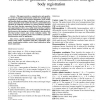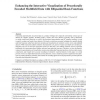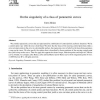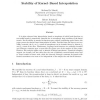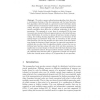BC
1998
14 years 5 months ago
1998
In many cases the distribution of saccadic reaction times (SRT) deviates considerably from a unimodal distribution and may often exhibit several peaks. We present a statistical app...
CGF
2005
14 years 6 months ago
2005
Current surface-based methods for interactive freeform editing of high resolution 3D models are very powerful, but at the same time require a certain minimum tessellation or sampl...
TMI
2008
14 years 6 months ago
2008
Abstract-- This paper provides a comprehensive and quantitative review of spatial transformations models for nonrigid image registration. It explains the theoretical foundation of ...
JMLR
2006
14 years 6 months ago
2006
Support vector machines (SVMs), though accurate, are not preferred in applications requiring great classification speed, due to the number of support vectors being large. To overc...
CGF
2006
14 years 6 months ago
2006
Functional approximation of scattered data is a popular technique for compactly representing various types of datasets in computer graphics, including surface, volume, and vector ...
CAGD
2006
14 years 6 months ago
2006
We consider parametric curves that are represented by combination of control points and basis functions. We let a control point vary while the rest is held fixed. We show that the...
CORR
2010
Springer
14 years 6 months ago
2010
Springer
Adaptive sparse coding methods learn a possibly overcomplete set of basis functions, such that natural image patches can be reconstructed by linearly combining a small subset of t...
ADCM
2010
14 years 6 months ago
2010
It is often observed that interpolation based on translates of radial basis functions or non-radial kernels is numerically unstable due to exceedingly large condition of the kerne...
ICA
2010
Springer
14 years 7 months ago
2010
Springer
We study a sparse coding learning algorithm that allows for a simultaneous learning of the data sparseness and the basis functions. The algorithm is derived based on a generative m...
ATAL
2010
Springer
14 years 7 months ago
2010
Springer
This paper introduces an approach to automatic basis function construction for Hierarchical Reinforcement Learning (HRL) tasks. We describe some considerations that arise when con...

